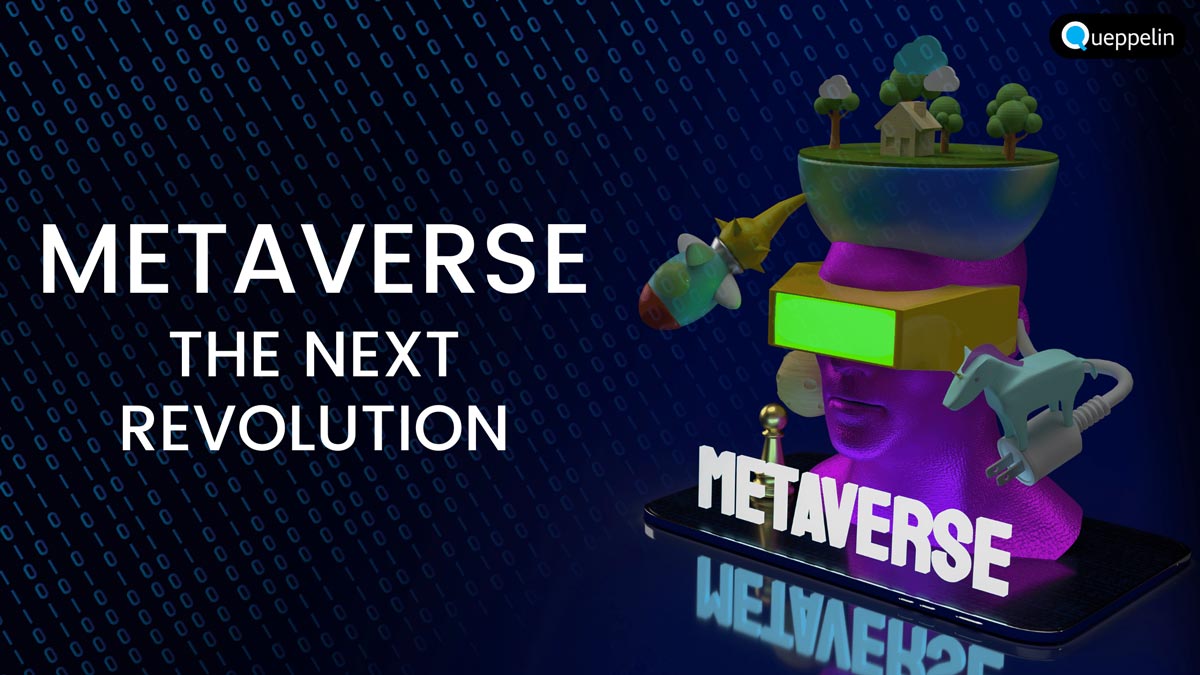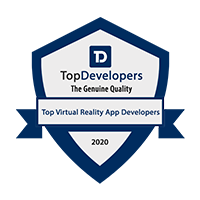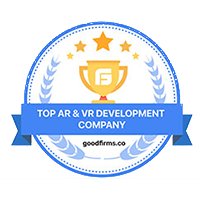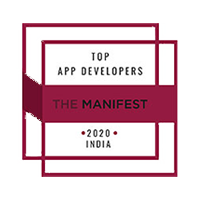We are in an age wherein digital technologies have been revolutionizing just about every industry. From communications to media to transportation to retail, the Internet and related technologies have given rise to a whole new kind of economy, with a whole new type of players at the center.
The next revolution is on its way to completely transform the facet of human life and give it a different look altogether. These revolutions are to be witnessed through Virtual Reality (VR) and Augmented Reality (AR). Predictions based on the market statistics say that 58.9 million and 93.3 million people in the country of United States of America will experience VR and AR respectively at least once a month in this coming year. It accounts for around 17.7% and 28.1% of the total population of the United States.
Surprisingly AR and VR are just two of the various ground-breaking features of the Metaverse, which is a whole new universe in itself. This article comprehensively covers the various concepts related to the three-dimensional digital world—metaverse, including VR, AR, Blockchain, NFTs, and much more.
Metaverse offers a fully immersive and interactive social experience with the help of headsets. When you put on your headset, you suddenly find yourself, as your avatar, in a new, three-dimensional world.
Metaverse is the name given to this virtual world. The words were first coined by the American science-fiction novelist and philosopher Neal Stephenson in his 1992 novel Snow Crash.
The Metaverse is basically a collective virtual shared space. It is created through the convergence of virtually-enhanced physical reality with the physically persistent virtual space. It is a network of “smart spaces” based on the intersection of the physical world and the Internet. These spaces include the natural world and the virtual world and the “empty” space in between that encompasses augmented reality (AR) technology such as Google Glass.
The user’s metaverse experience will be as if they were actually in that world. You can see, feel, and listen as if you were there.
The development of this immersive, three-dimensional environment will allow people from anywhere in the world to communicate and interact as if they were in the same room.
This article is about this next-gen Internet revolution – the development and use of “metaverse” to make life easier, safe, and joyful for humans. So, let’s start with understanding the metaverse in detail.
What is Metaverse?
Metaverse is a decentralized platform that allows anyone to build and manage virtual reality environments and applications. It is essentially a three-dimensional virtual world that utilizes technologies such as blockchain and cryptocurrency. It allows the users to create their own virtual spaces, form social networks, and share digital assets. In short, it is a digital space where anyone can create and manage their online identities, thereby leading to the building of communities.
The future of the internet is mainly about how the forthcoming blockchain technology will power the Metaverse projects, and how that will change everything.
Metaverse is the next major innovation in the virtual reality space. While the standard definition of the metaverse refers to a virtual reality world where people interact and communicate through avatars, others think that the technologies could include augmented reality and robotics. One way or the other, the metaverse is a world that people will inhabit and give it a shape. It would be something that we will become increasingly reliant on as we move into the digital realm.
The building blocks of the metaverse are the foundation of the idea of a virtual world in which individuals communicate and interact with one another through avatars and in-game contacts. Through these platforms, the metaverse will be built upon. The creation of the metaverse depends on the limitations of virtual reality.
The metaverse’s core elements are about to take you on a wild ride to explore the new virtual world waiting at your disposal.
One of the core elements is blockchain but, what is it, and is it just a new bubble ready to be bust?
What is Blockchain?
Even before the Metaverse could come into existence and revolutionize how we interact on the internet, the Blockchain started to alter how we transacted on this online medium. This technology formed the backbone of various other groundbreaking technologies such as NFTs and Cryptocurrencies.
So, what blockchain is after all? Blockchain is a public digital ledger system that can be used for executing transactions, smart contracts, and other agreements. Its power relies upon its decentralized nature as every transaction is stored on a distributed database in different locations. It records transactions chronologically and transparently protecting privacy and ensuring the fidelity of the data. Moreover, the public nature ensures that the control is not in the hands of an individual organization.
With blockchain, we are experiencing a technological revolution with many different paths for development that may lead to different outcomes. For example, the emergence of various cryptocurrencies offers several advantages like security and privacy. Similarly. NFTs are the new form of unique digital assets based on blockchain technology that are creating their own market.
Interestingly, blockchain can offer an immense contribution to the development and growth of third-world countries. For example, in Timor Leste, villagers can log in to an international labor exchange platform using a blockchain-enabled smartphone, input the type of work they are offering, show their skills, and connect with businesses seeking to use their services.
The value of any currency, including cryptocurrencies, is directly related to how much people believe in it. As of now, most of the world’s currencies are fiat currencies i.e., they are backed by a government or a central bank. Hence, they enjoy great trust from the people. In the case of cryptocurrencies, this belief is yet to be established. However, given the high rate of increasing popularity, the day does not seem to be too far.
What are the Applications of Blockchain?
Blockchain is an exciting technology to deal with. We are already seeing it being used in voting, prepaid systems, banking, financial transactions, and smart contracts. These are just the beginning.
Despite concerns, blockchain has the potential to be the next revolutionary point in financial transactions. The facility to make payments without involving third-party intermediaries, transfer of funds, and storing information regarding transactions in a transparent manner offer immense opportunities.
Similarly, the other use for blockchain has been voting, where individuals can vote democratically without relinquishing control of their votes to intermediaries.
This is still in the early stages of development, but hints are emerging that there may be other possible applications for blockchain technology. For example, the ability to store and organize data more efficiently.
There is still a considerable amount of skepticism and misunderstanding when it comes to fledgling technology. Still, for the time being, we can observe how it is applied in the voting and financial sectors and wait patiently to see the impact on our broader society.
As voting becomes increasingly digitised, apps like Augur and BlockStation make the voting systems more accessible, secure, and transparent. Ethereum users can now verify transactions on the public ledger, giving mobile voting stations an added layer of authenticity.
Blockchain needs to be implemented across more of our social structures if it’s ever to be considered successful, but for now, these initial steps indicate the technology’s potential.
Moreover, blockchain has a unique role to play in the Metaverse by attributing uniqueness to the assets by making them authentic and irreplicable. This enhances their value manifold, for example, the GIF of the Nyan Cat that was sold for $560,000. This brings us to the other components of the metaverse – Augmented Reality and Virtual Reality.
What is Augmented Reality?
Let’s start with the definition. Augmented Reality (AR) is an experience in which the user interacts with the real-world environment through computer-generated perceptual information. It is an interactive layer of digital information covering the physical reality that gets reflected on the screen. One of the most common examples is the various filters available on some social media platforms such as Instagram or Snapchat.
As per recent data, by 2024 there will be around 1.7 billion mobile AR users worldwide, a rise of around 200 million from 1.5 billion in 2015. In this year i.e. 2022, there will be approximately 1.1 billion users of mobile AR worldwide.
Augmented Reality (AR) extends 3D graphics, video, and audio computer technologies to our everyday, real-world environment. AR is often used in the context of mobile-based device applications, with their superimposed audio, video, graphics, and text.
AR strives to blur the lines between the virtual and the real world by changing the way we see it. It makes it broader, more accessible, and limitless.
One of the newest features in this technology happening right now is the 3D digitalized avatar on the internet. This avatar is not just some random object on the surface of the computer; it’s your avatar.
And to wrap it all off in a nice bow, we have arrived at our next destination. Creating a virtual space where you can create whatever you can imagine i.e. Virtual Reality.
What is Virtual Reality?
Virtual reality spaces are the new internet sensation that has grasped the eyes of many, quite literally. It is a computer-generated environment wherein the users undergo an immersive experience. They can use it to get a sense of a location, a situation, an event, a job, a product, or even another person’s life without even having been there physically. Thus, it is a powerful new medium that transports a person to an entirely different world.
VR experiences can be used to study human behavior or to train them in a particular environment that imitates reality. That is why it is used to train professionals like pilots, astronauts, to teach new skills to people, and even to inspire creativity.
Not only this, VR is becoming increasingly mainstream these days. Dozens of new VR companies are popping up, and the technology is getting affordable for the general public to get their hands on it.
Three years ago, for example, the consumer version of the Oculus Rift was priced at approximately $300. Now, they are available for only $199, with controllers bringing the cost to be over $370.
And, with the release of numerous virtual reality exclusives, VR is here to stay.
To that end, another aspect of metaverse that has taken shape recently after AR and VR is the NFTs. In the following section, we will drive the clouds of doubt away.
What is NFT?
NFTs, or non-fungible tokens, are a type of data stored on the blockchain that offers a unique certificate of ownership to digital assets. Unlike cryptocurrencies, which use a shared blockchain and are fungible(interchangeable), NFTs possess their own exclusive blockchain. It can be used to represent virtually anything like digital collectibles such as in-game items or digital weapons, cryptocurrencies, and even real-world assets. The non-fungibility is the USP of NFTs that make them so valuable.
They’re one of the most exciting new concepts in the digital world. The NFT market stands at around $22 billion markets by volume. In the future, it could become worth hundreds of billions of dollars as a digital “collectibles” market.
NFTs can be utilized in various forms. Some examples of NFTs are as follows:
- Digital collectibles such as online avatars, CryptoKitties, digital creatives, audio-video or GIF files, etc.
- Digital game items: in-game items such as weapons in online games.
- Real-world assets like the real-world trading platform Polymath, physical representations of digital assets, like CryptoKicks
The most famous NFT is undoubtedly CryptoKitties, which was a game where people could buy, sell, and trade unique digital cats. The game became so popular that it brought down the Ethereum network and caused a huge spike in the price of Ethereum.
Now, let’s move on to other usages of blockchain technology.
What are Smart Contracts
These are the programs that run on blockchain and can be used to execute traditional legal contracts. They get activated automatically when predefined conditions get fulfilled. They offer certainty of the outcomes to the contract participants by bringing transparency to the process of contract execution. Moreover, as no third party is involved in the process, it saves time as well as cost.
Smart contracts work on the basis of the “If or when… then” statement. As soon as the condition is met and verified, the contract gets into effect. These contracts can be of different forms and serve various purposes such as releasing funds, registering a vehicle, or sending notifications. And once the contract is successfully executed, the blockchain gets updated and cannot be changed. In 2016, Smart Contracts found yet another use in the form of Decentralized Autonomous Organizations.
What are Decentralized Autonomous Organizations (DAOs)?
Decentralized autonomous organizations (or “DAOs”) are organizations that are run by algorithms. Unlike traditional organizations, where decision-making is typically centralized, in a DAO all decision-making is based on algorithms. This means that a DAO is effectively a collection of smart contracts that run on a blockchain. A DAO is effectively a computer program that runs on a blockchain.
DAOs are a type of DApps (Decentralized Apps), which is a piece of software that runs on a blockchain and can be used to execute traditional legal contracts (like a smart contract). DAOs tend to transform a human organization into autonomous computer organizations. The idea behind DAOs is that instead of having a single person or group of people in charge, the decisions are made through algorithms. The governing rules of such organizations are encoded as a computer program. Thus, it is transparent and predictable and is controlled by the organization members instead of a central government.
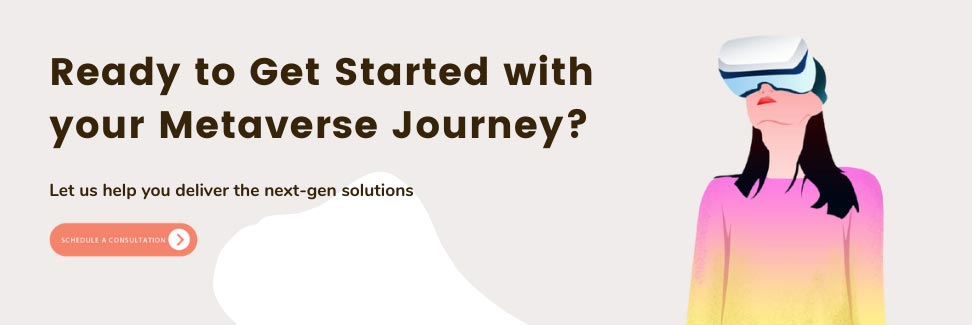
Step into the future with Metaverse
Looking around, the Metaverse seems to finally be taking a defined shape with more precise direction, purpose, and expectation. Different platforms focus on meeting different niche markets under the umbrella of blockchain ecosystems.
Metaverse utilizes artificial intelligence and blockchain technology to ensure safety and to create a digital virtual environment that transcends the limits of the real world. It is a space where you can freely engage in social and economic activities as per your will.
Stepping into the future has never been this fascinating. Get the best of both worlds with the powerful technologies by your side all the time. Queppelin’s In-house subject-matter experts with their expansive technological know-how will help you surf through this new world and seize the opportunities.
Step into the future with Queppelin and stay tuned to The Metaverse Guy Podcast, which you can listen to on any device and explore the world in the simplest and most fun way.
